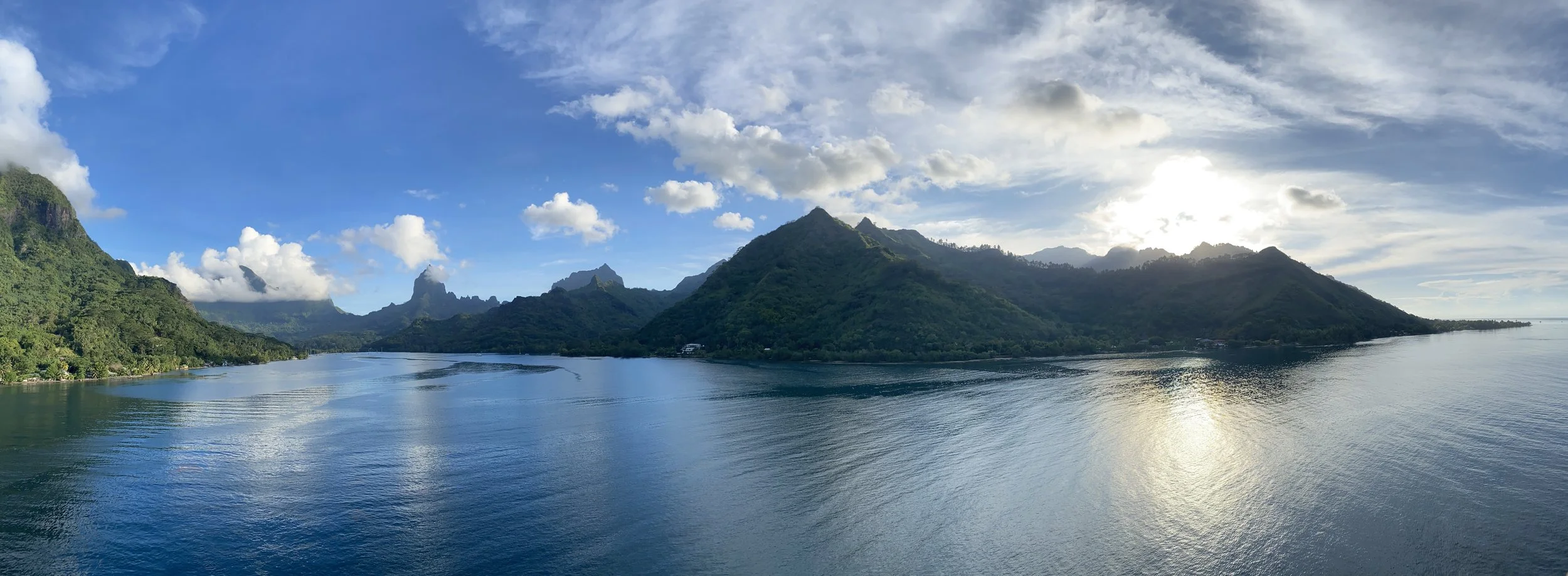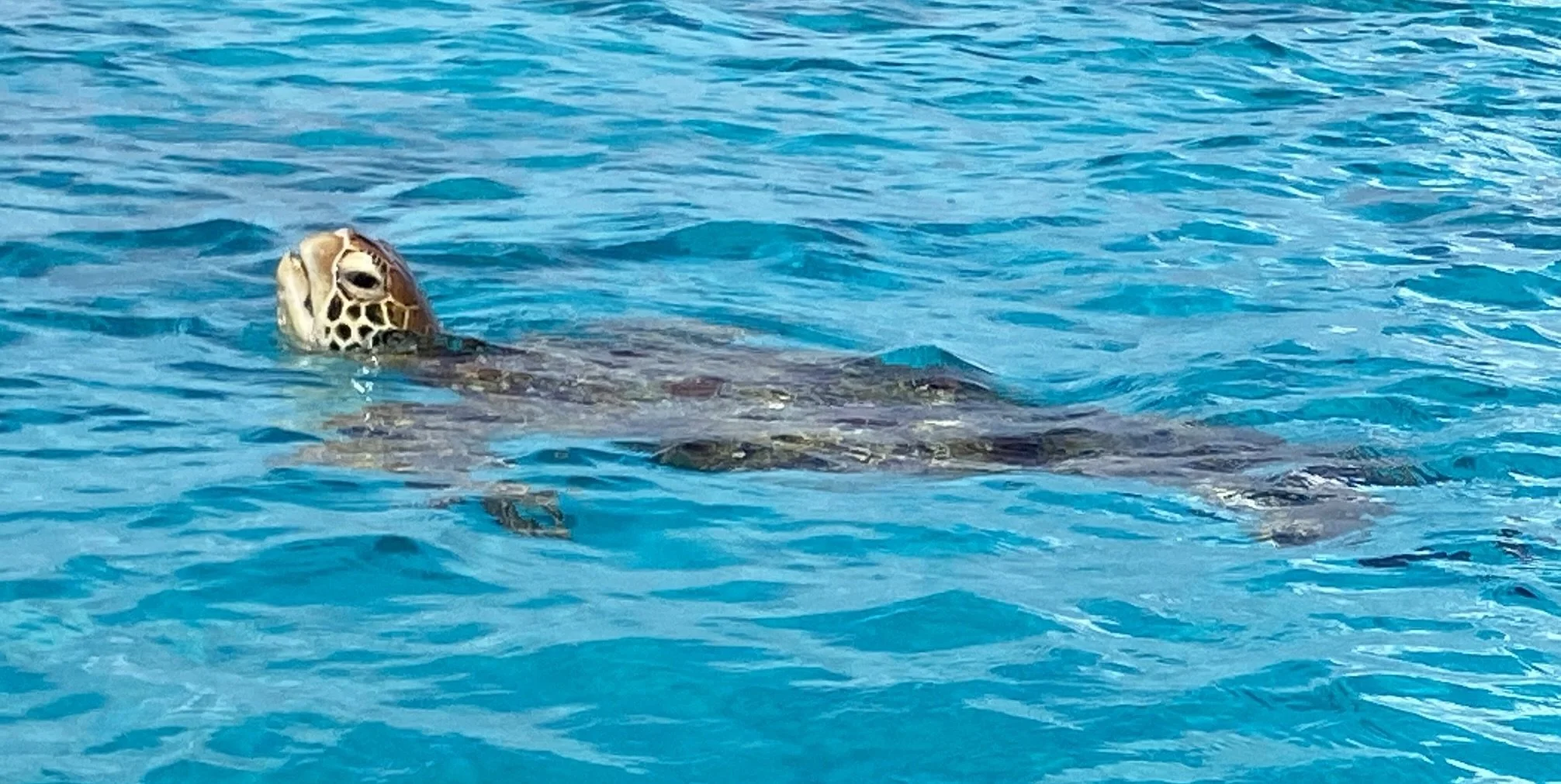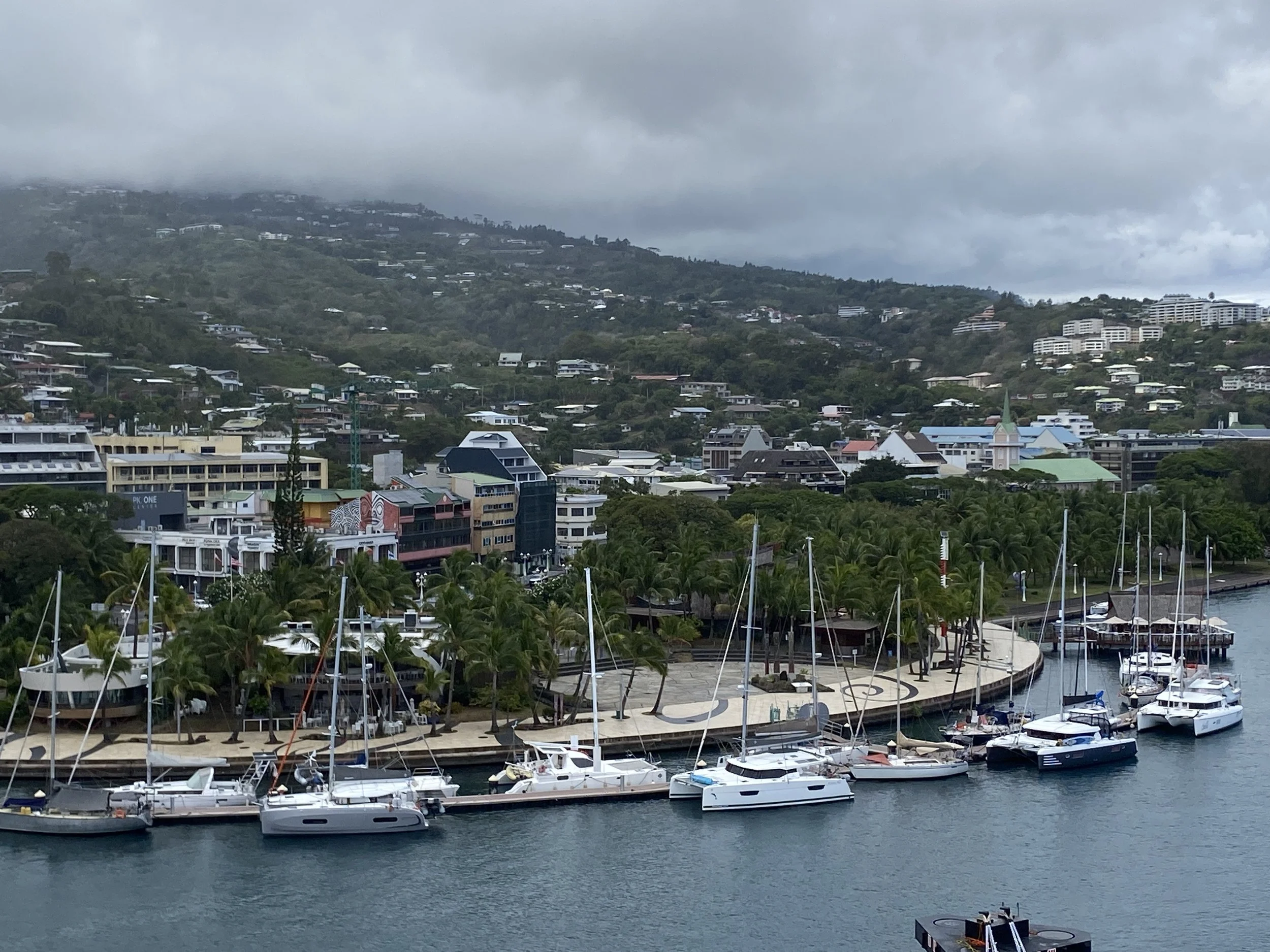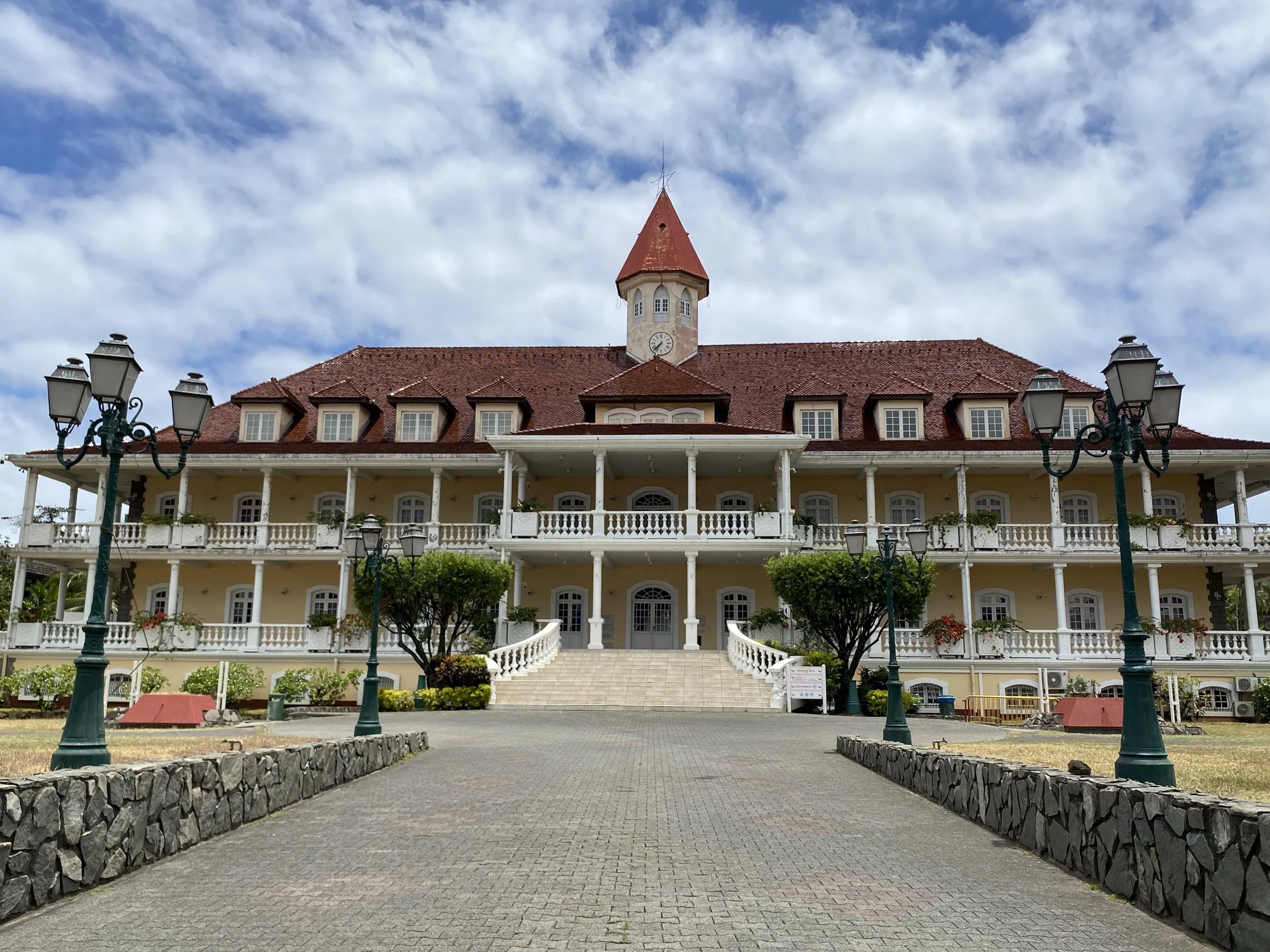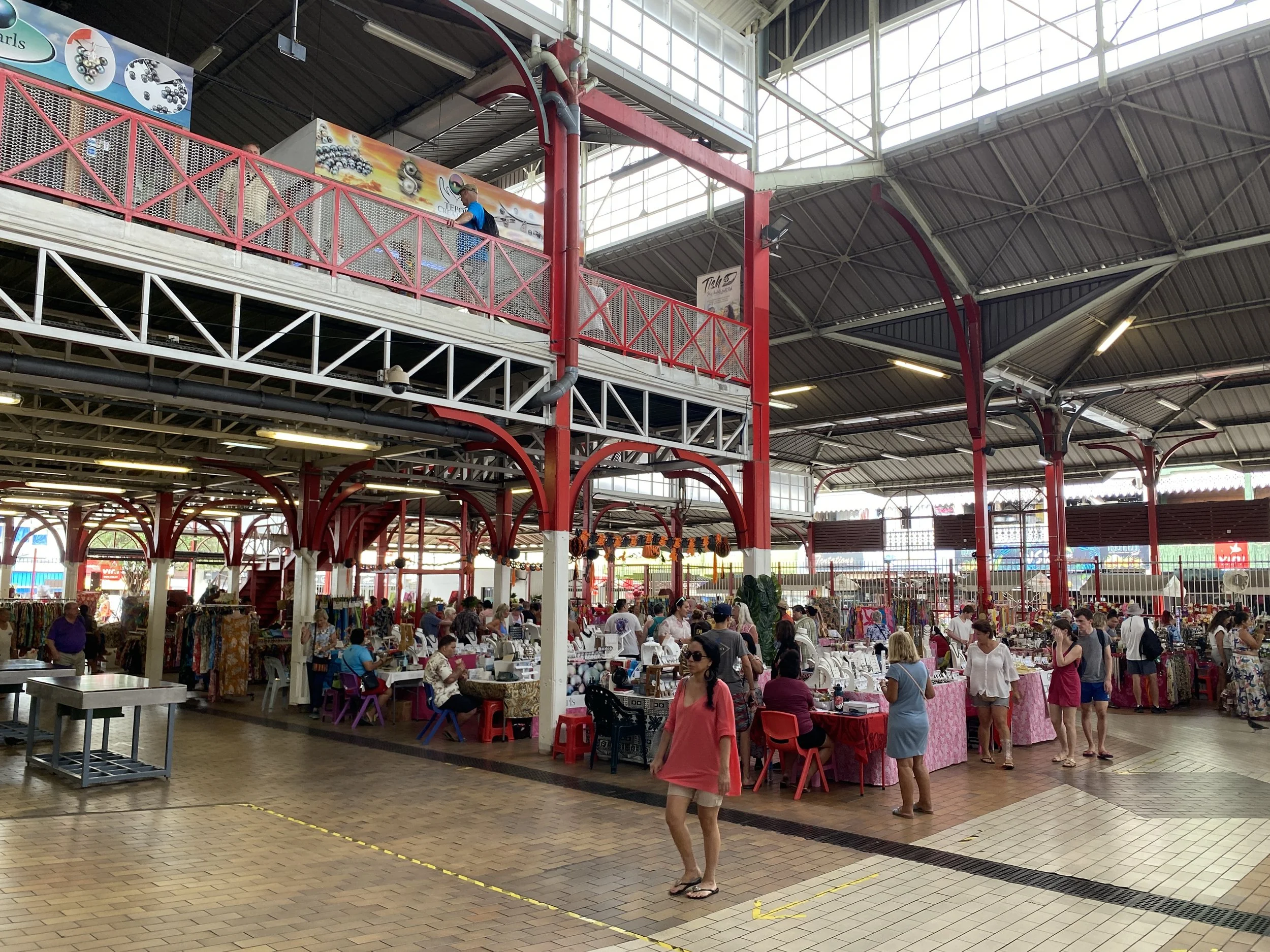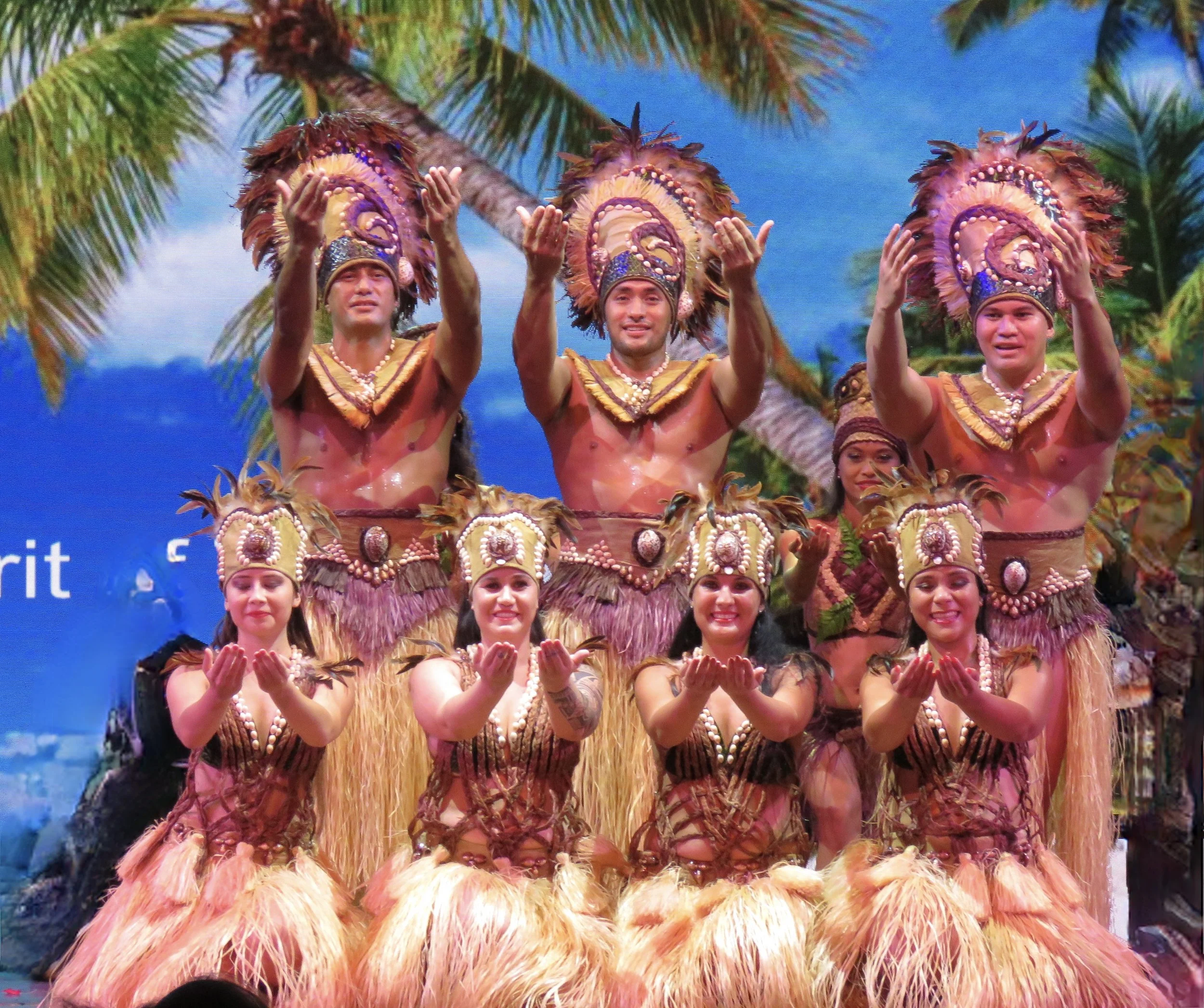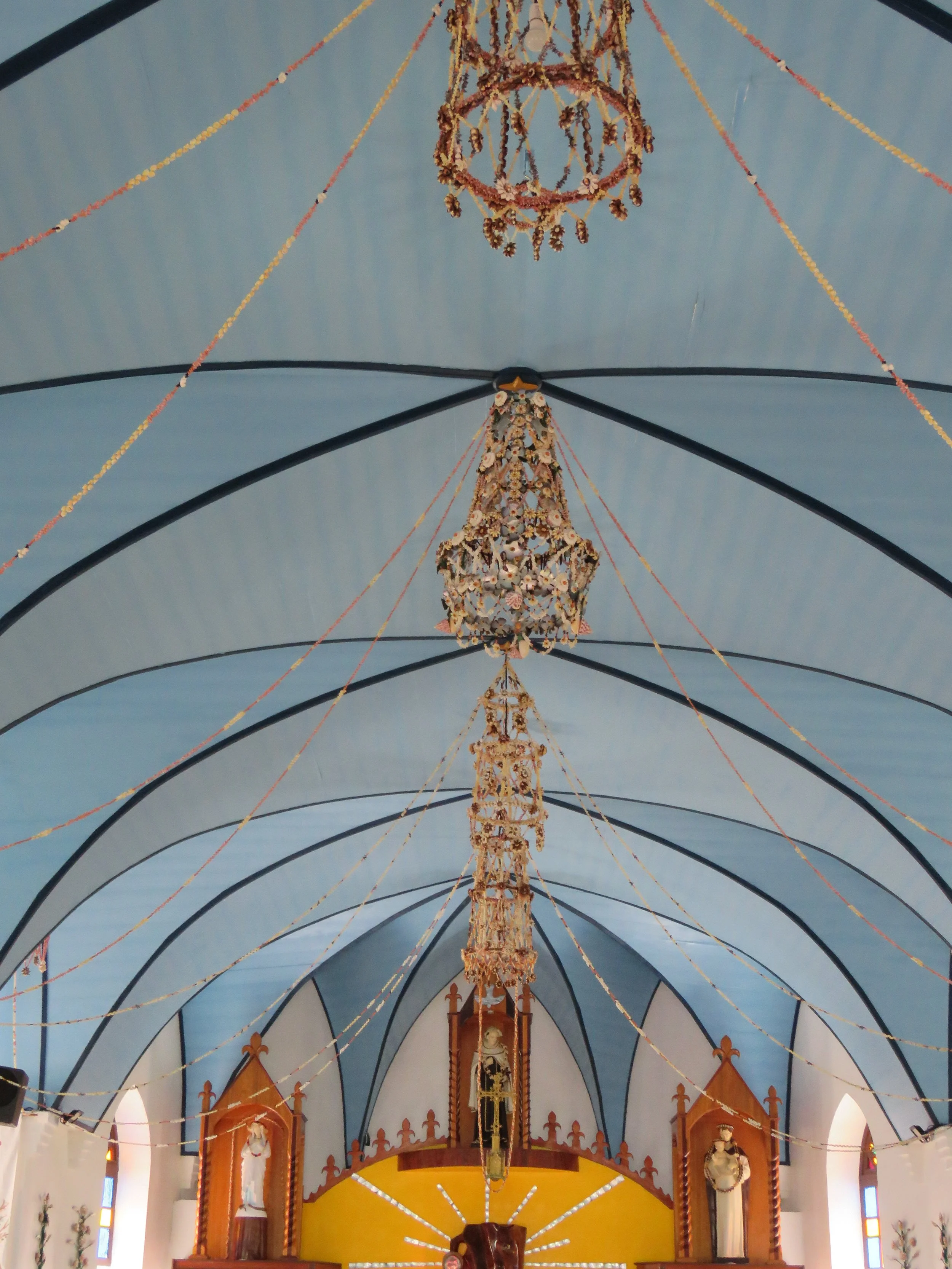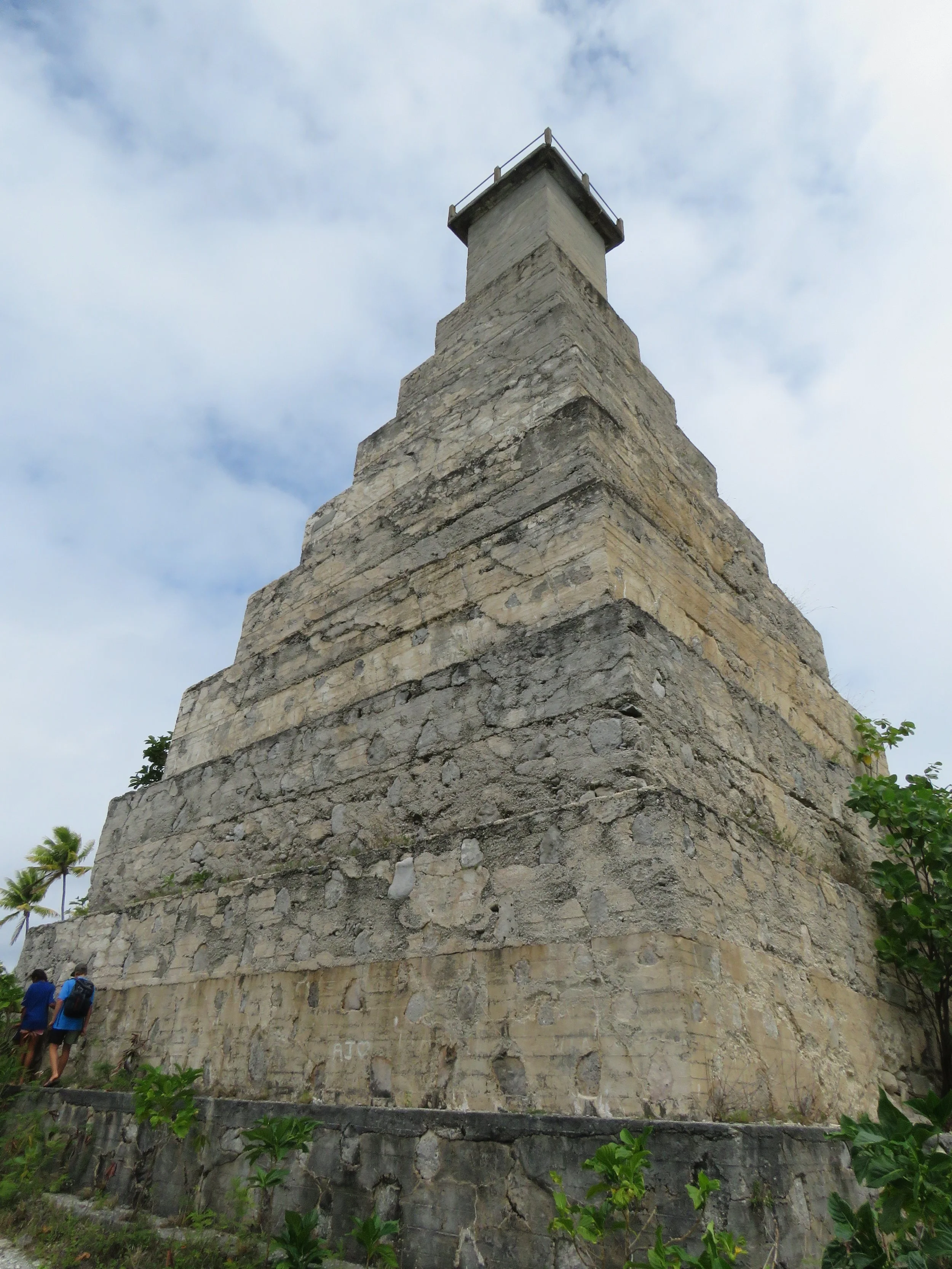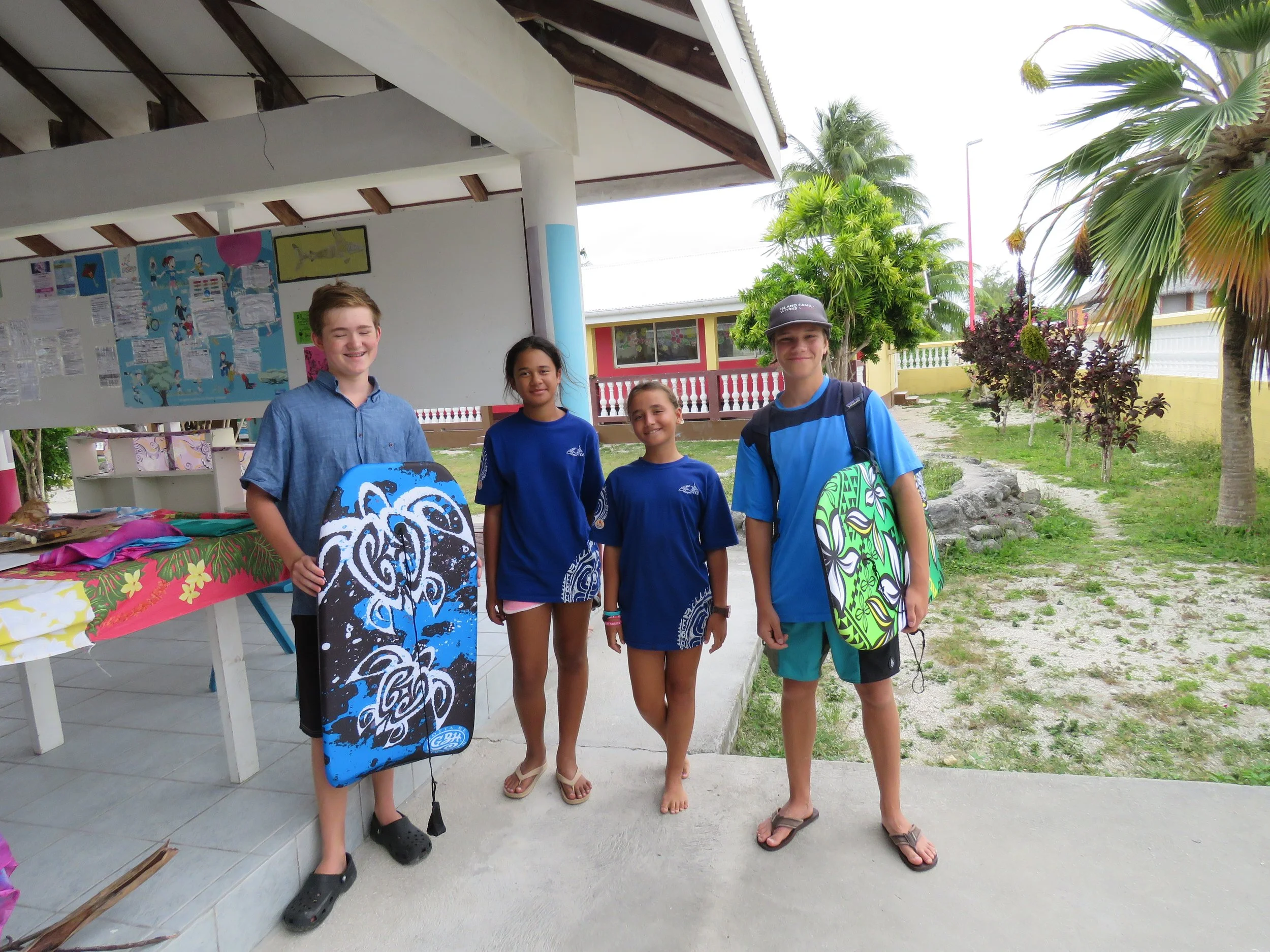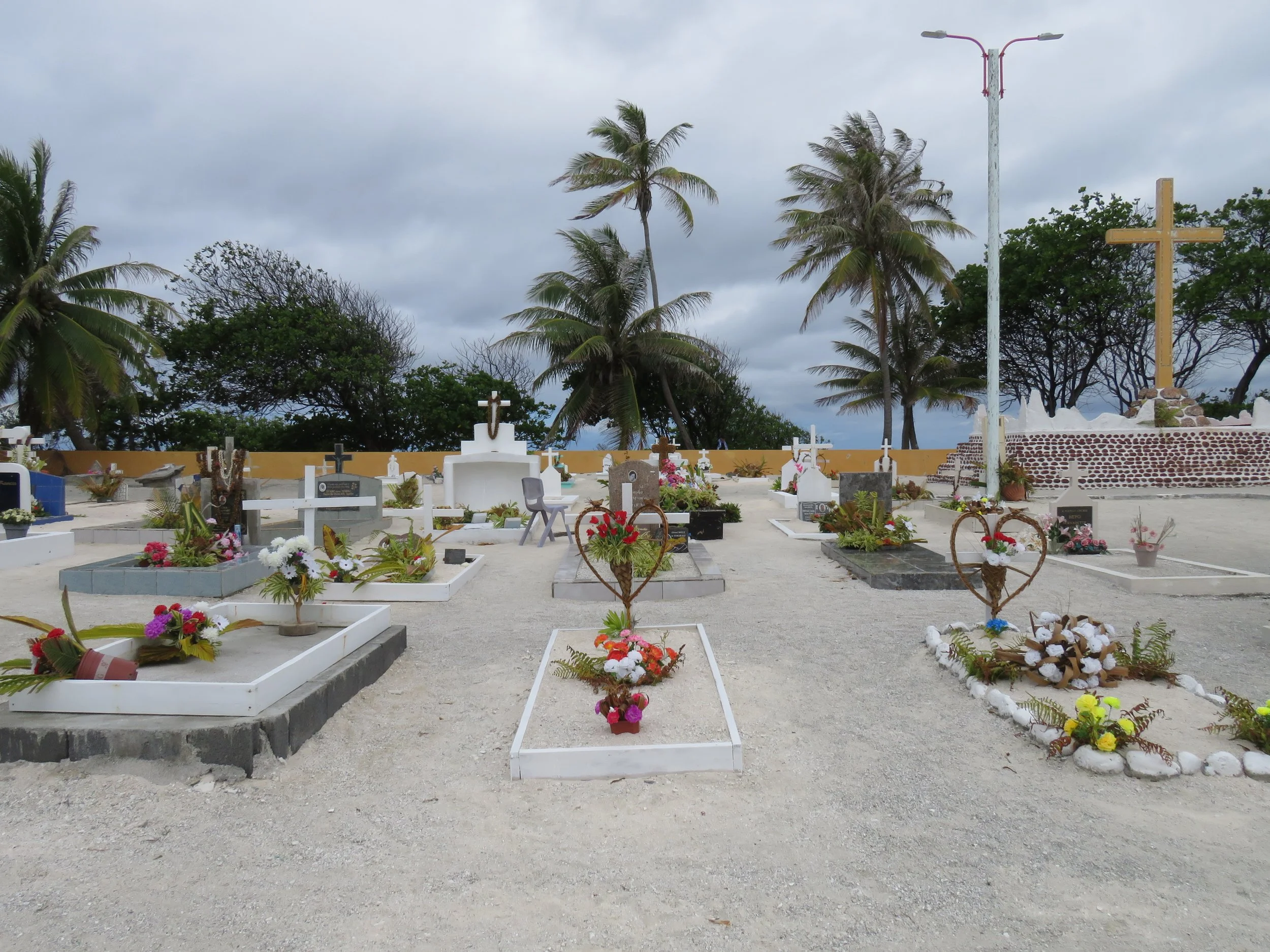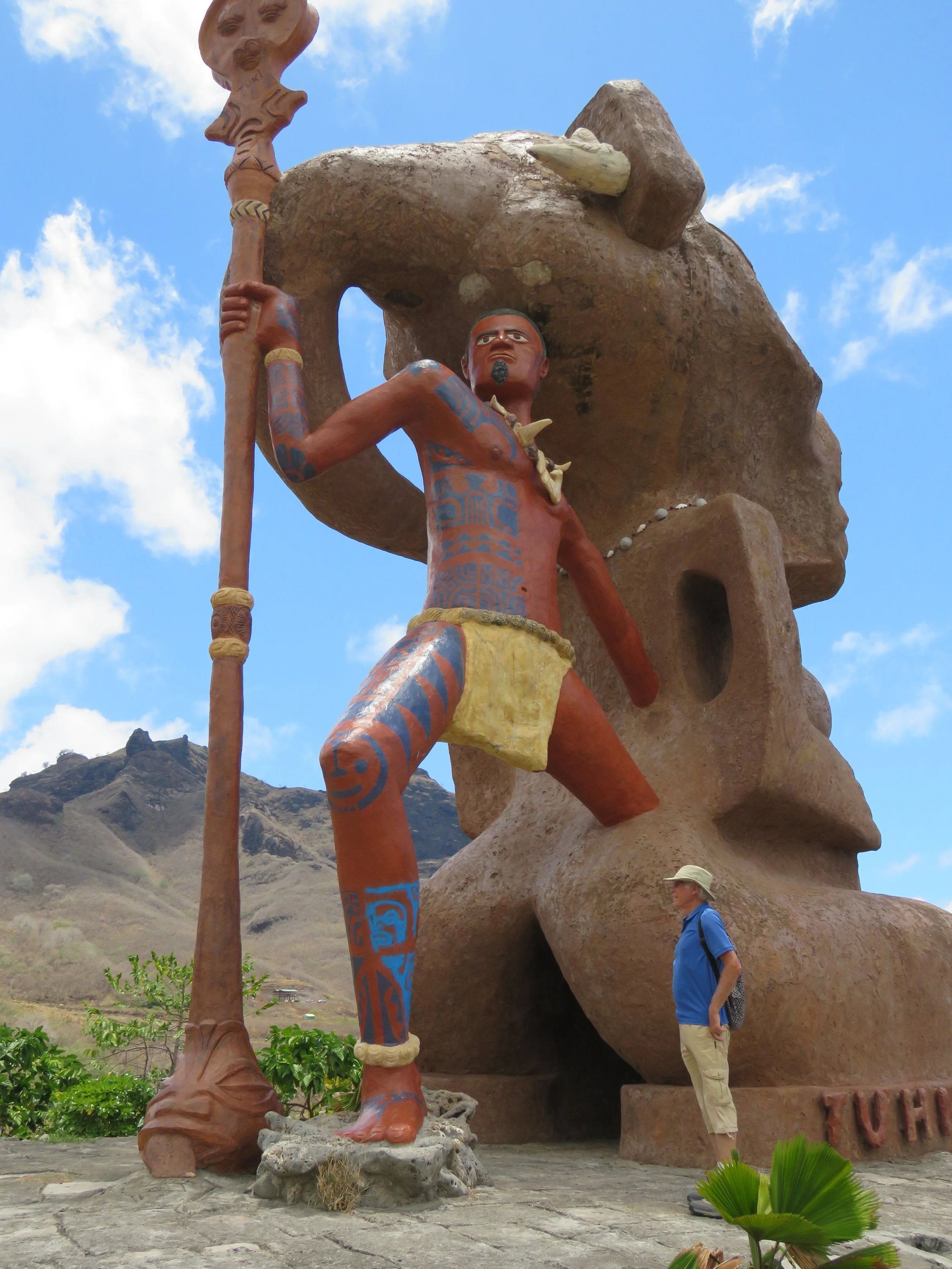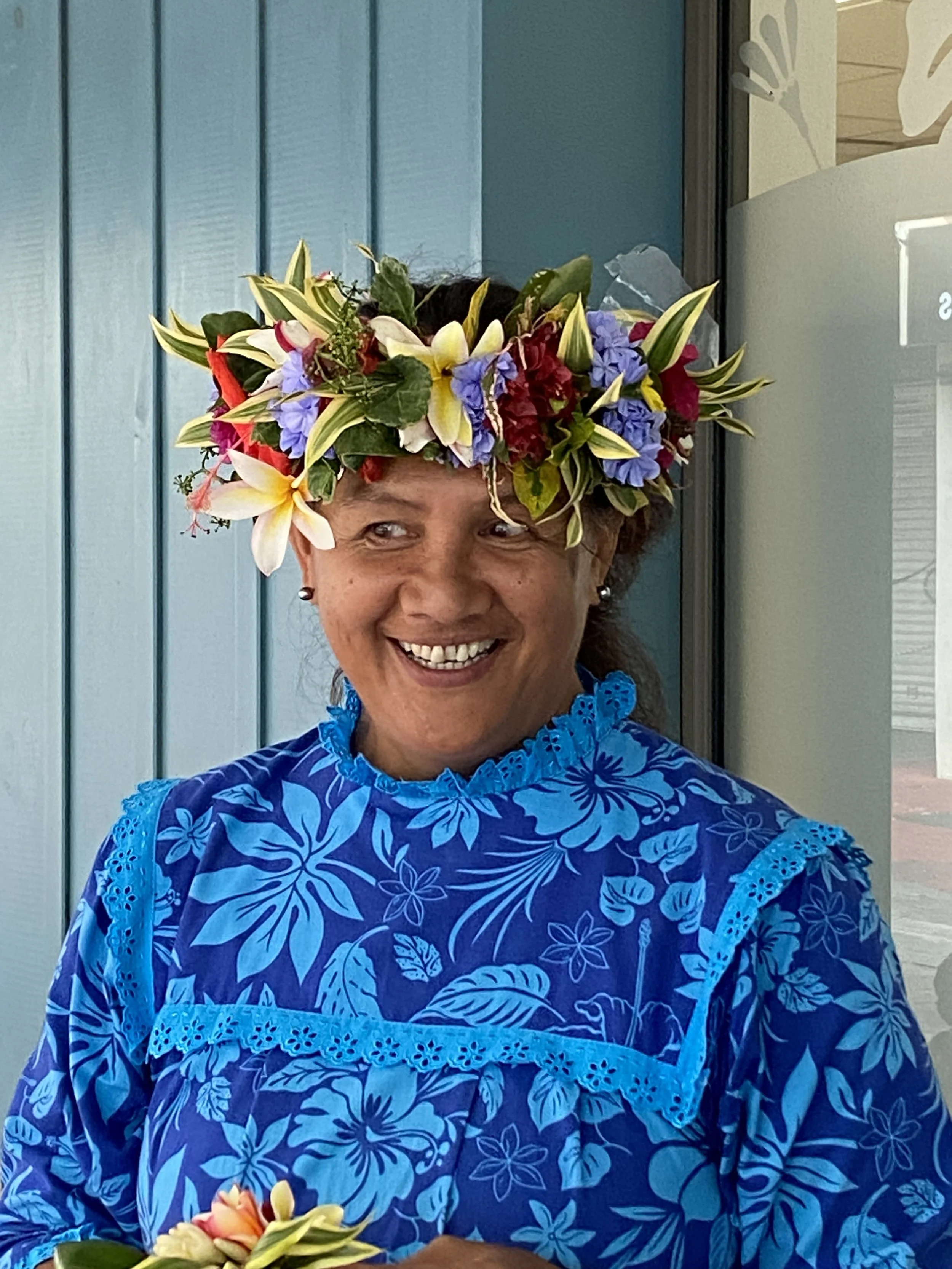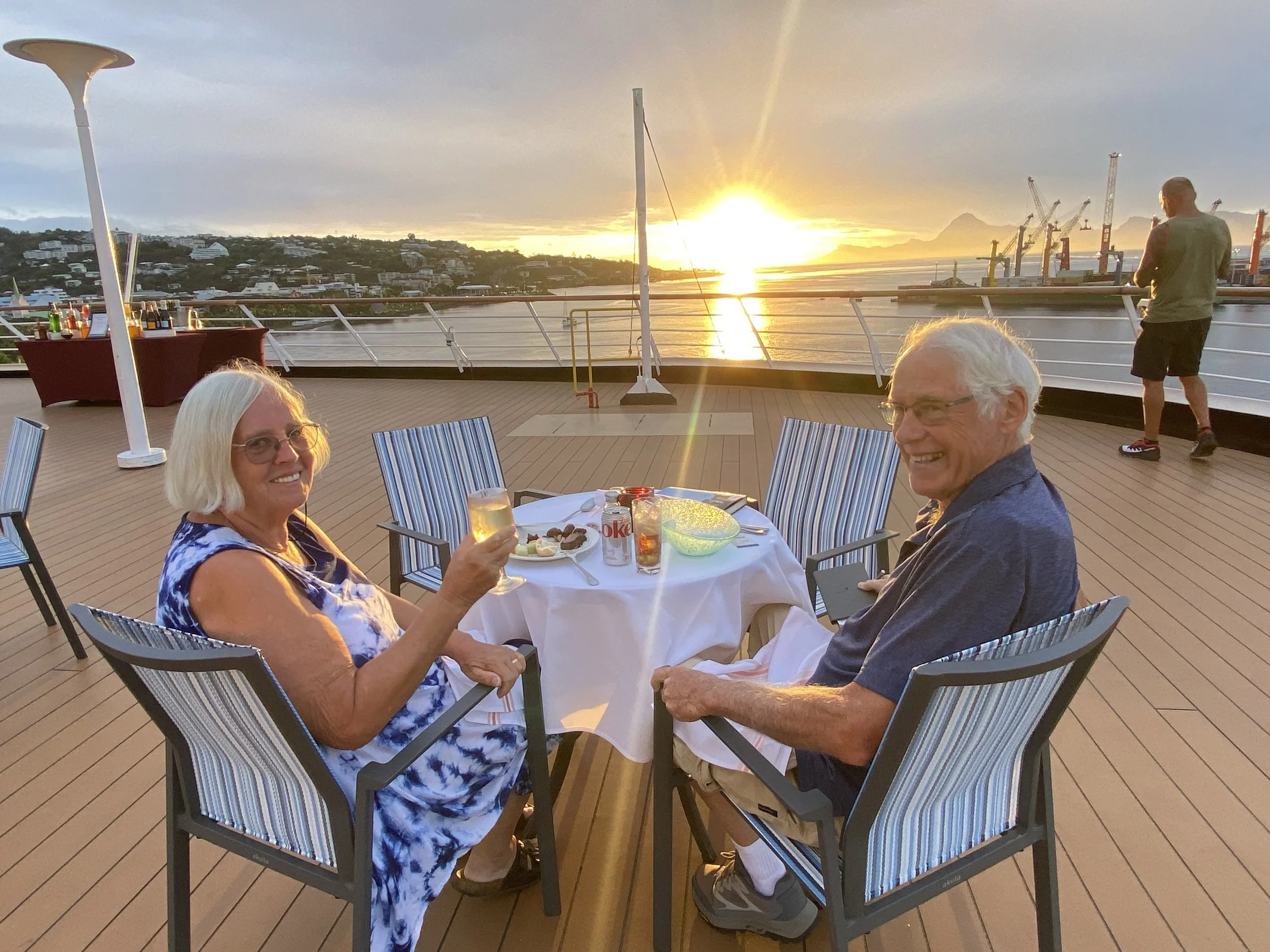After nearly two months in the South Pacific we had snorkeled in the cleanest, blue waters, patted rays, fed reef sharks, sipped coconut milk and walked barefoot on white beaches. What more could we ever wish for?
Papeete, Tahiti
We did not have much of a wish to visit the city of Papeete on the island of Tahiti in French Polynesia because it was described as an industrial city with lots of traffic. But our ship made a two day stop here so we strolled the boulevard and visited the bustling market. In retrospect we learned that we could have stayed two nights more on Moorea, our very favourite island, and then taken a short ferry ride to catch up with our cruise ship. But we didn’t know that then.
Market Hall, Papeete
Papeete was OK with nice people. Some lovely grandmothers gave me a hand corsage of green leaves and fragrant frangipani. We bought gifts of our family back home. In the clean water along the boulevard we watch a giant turtle and colourful fishes glide over coral.
That night, a Polynesian group joined us on the ship and performed dances and Polynesian music. That lively evening was followed by a dead quiet Sunday. Many of the islands here are very Christian and Sunday is strictly observed by going to church and spending time with family. Basically everything is closed (except Burger King…:-).
Our next stop was Fakarava, on the island of the Tuamotu atolls in French Polynesia - a lovely small island. We walked down the dirt road to the ocean side of this motu. Then followed sandy roads around the island and back to the village. Chickens scurried around tall palm trees and children waves at us from their porches.
Shell chandeliers
A tiny tourist office offered a trickle of wifi. We visited the local church which had, dangling from the wooden rafters, gorgeous large chandeliers. But instead of crystal, these were hung with shells.
Across from the church was a small, white sand beach so the boys and I plopped down and swam and snorkeled in the warm water. After a long time of floating and snorkeling over coral, a lady on the beach showed me that she had been videotaping us. While she was filming, a shark floated by - right behind us! We’d never even noticed. Here, even the sharks are friendly…
Pyramid shaped lighthouse on Tuamotu
On our way back to the tender dock, we stopped by the local school. On one of our first stops on this cruise, the boys had each bought a boogie board. But now we were on our last tiny island and we had just enjoyed our last swim and time playing with the boards. So we found some people at the elementary school and donated the boogie boards. They were thrilled. When one mom heard that we had been hoping to find a geo-cache on Tuamotu, she drove us in the back of her pickup truck to pyramid lighthouse - too far to walk - and she and her kids helped us find the geo-cache.
During our next day at sea, we enjoyed great lectures about ocean currents and hurricanes, about whales and dolphins and much more.
If you already live in heaven, do you still go there when you die?
And then we reached Taiohae on the island of Nuku Hiva, in the Marquesas Islands. Our very last stop! So far away from the previous island - more than a day and two nights of sailing - the isolation of these islands is mindblowing. How did early explorers even come across them? Nuku Hiva felt more like Easter Island to us than any of the other islands. The dancers reminded us of Maori haka dancers from New Zealand, with rolling eyes, tongues sticking out and lots of loud shouting. We walked up hill to a gigantic tiki and warrior statue looking out over the endless ocean. We strolled along the shore to a grocery store and an historic tiki park. And then… it was time to sail back to San Diego. The end of a perfect cruise full of amazing islands, beautiful people and lots of adventure.
When we first booked this trip, for the four of us, I felt a bit of trepidation about the environmental impact cruise travel might have. However, I was most impressed with Holland America Line. They buy food locally sourced and sustainable. The exhaust from the ship’s chimney is scrubbed clean until only white vapour escapes. Advanced air quality systems significantly reduce sulphur compounds.
The ship produces its own fresh water by treating seawater. They also create their own heat or cooling on board. Food waste is composted until it is nothing but safe fish food. They have installed bio digesters on these ships, which use oxygen, water and micro organisms to break down food waste, to help reduce methane and carbon dioxide emissions and reduce the demand on the ocean for food waste decomposition. There is almost no garbage at the end of a cruise thanks to thorough composting and recycling. Hand towels in public bathrooms were cloth only. We saw NO single use plastics anywhere. There were no straws or paper cups. Even little butter or jam containers were not plastic throw-away but refillable pottery. At one point I really needed a plastic bag. I asked several crew members, went to different decks but, in then end, I concluded that there was no plastic bag on the ship! And not having to fly to the other end of the world, was a wonderful added bonus to this perfect cruise.
